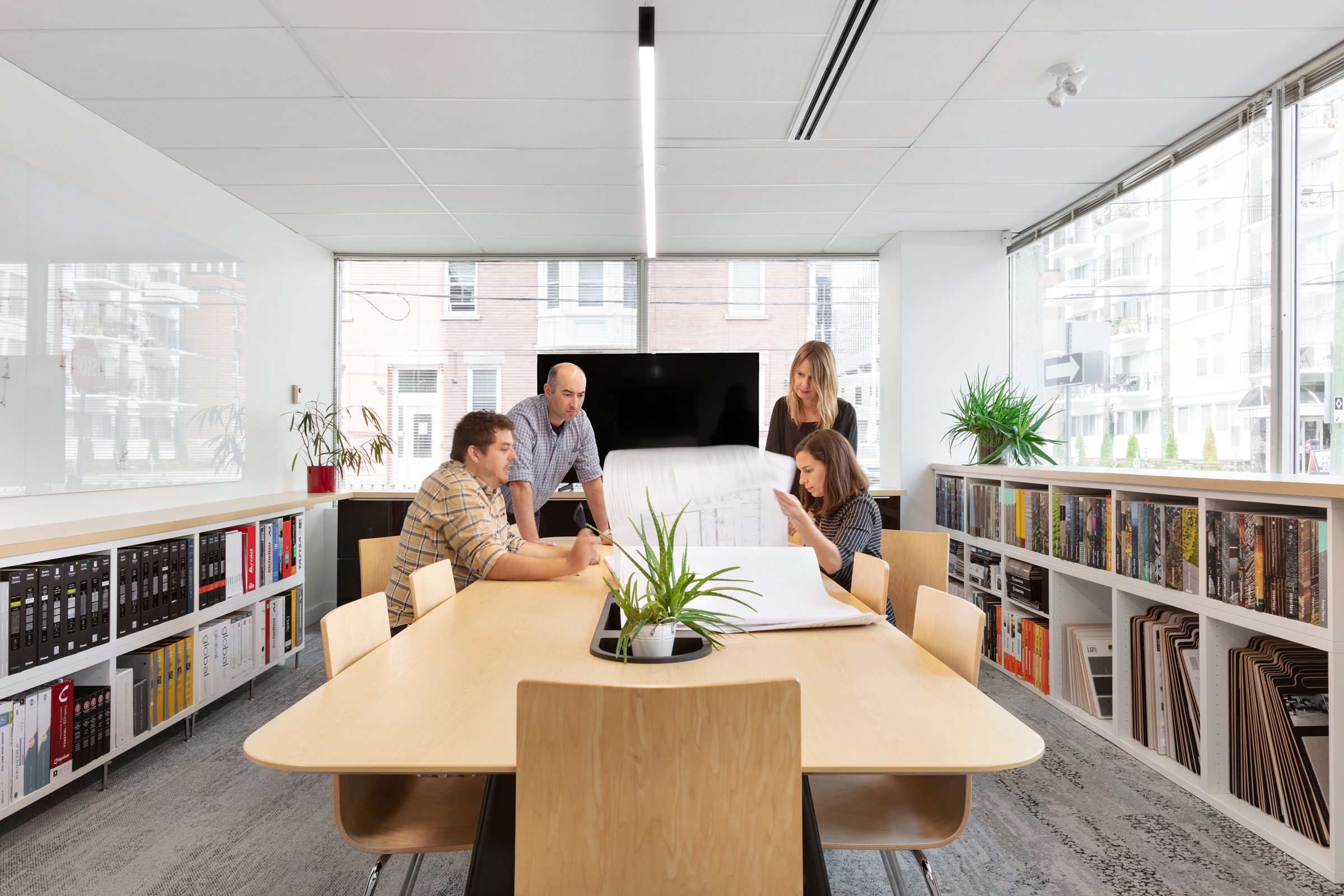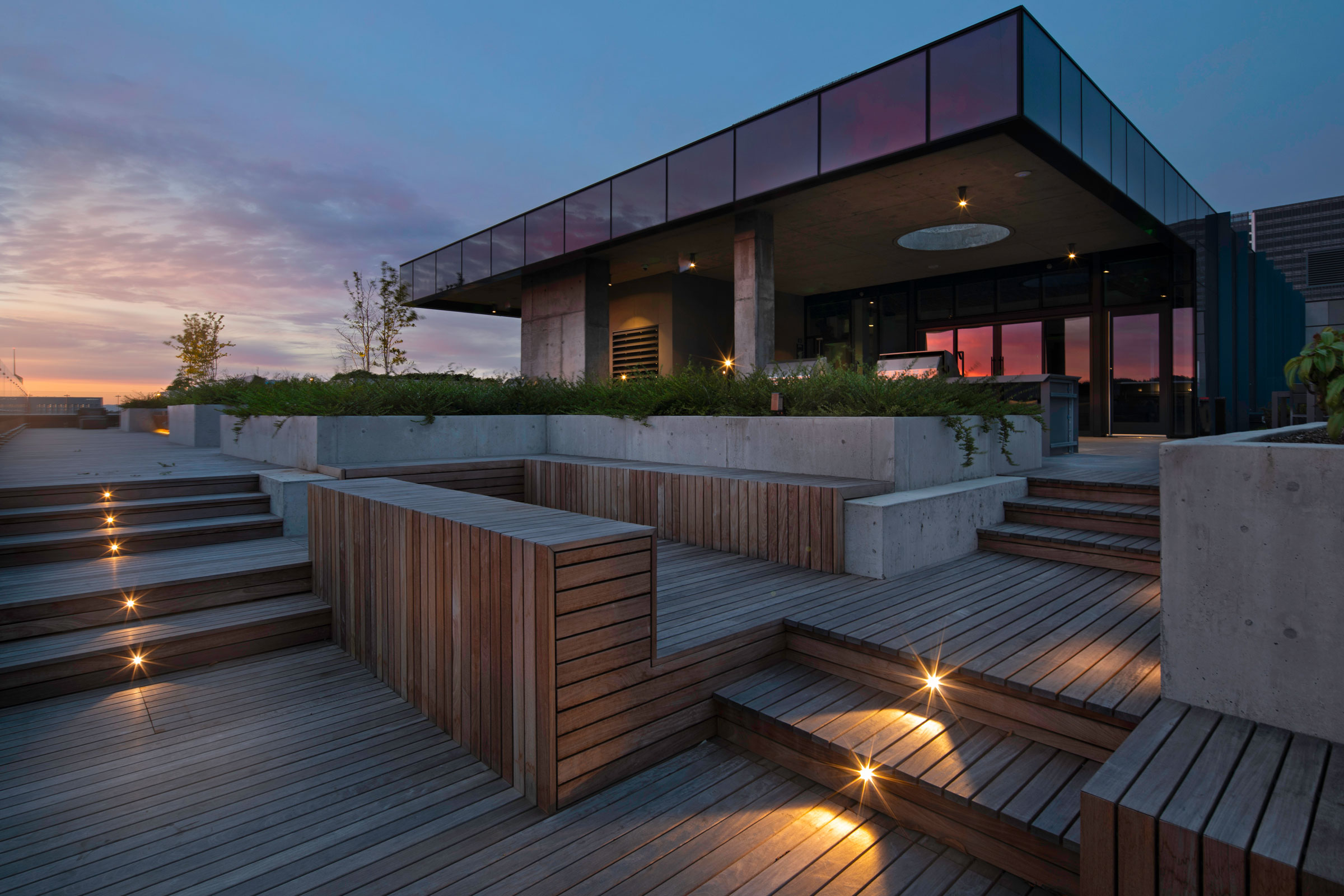Story at a glance:
- Fitwel is a certification system that focuses on tenant health wellness.
- Buildings are assigned one, two, or three stars based on a 144-point scorecard.
- Healthy, clean, and safe indoor environments make buildings more desirable for tenants.
Similar to how LEED tracks a building’s sustainable infrastructure, Fitwel is a certification system that looks at how a building affects occupant health. This might include improving a building’s walkability, its air quality, or its access to nature.
Launched in 2016, Fitwel was developed by the CDC and the General Services Administration and is currently administered by the Center for Active Design.
How does certification work?
When developing Fitwel, the CDC analyzed more than 5,000 research studies to identify 12 main categories buildings could improve upon to increase the well-being of their inhabitants. These categories, detailed later in the story, are:
- Location
- Building Access
- Outdoor Spaces
- Entrances and Ground Floor
- Stairwells
- Indoor Environments
- Workspaces
- Shared Spaces
- Water Supply
- Prepared Food Areas
- Vending Machines and Snack Bars
- Emergency Procedures
Across those 12 groups, a building can earn up to 144 points. At 90 points the building receives one-star certification. At 105 points it earns two stars, and at 125 points three stars. The whole process can take up to 12 weeks and includes Fitwel issuing remarks, explanations, and extra demands during the process.
Fitwel provides multiple scorecards for different types of buildings, whether retail, commercial office, or multi-family residential. The complete scorecards can be downloaded here.
What’s the difference between Fitwel and WELL?
While Fitwel and WELL both support healthier work enviroments and integrate well with other standards like LEED and the Living Building Challenge, Fitwel can be thought of as a “light” version of the WELL standard. It’s cheaper than WELL, only charging a $500 registration fee versus WELL’s $2,500 fee. Fitwel was also designed to have a streamlined documentation process that doesn’t require an external consultant, further saving on time and costs.
How can buildings can be improved for Fitwel certification?

CSV Architects’ new Ottawa office is targeting two-star Fitwel certification. Photo by Krista Jahnke Photography
Fitwel 2.1 outlines plenty of ways to improve the well-being of a building’s occupants. The below examples are from the Multi-Tenant Whole Building Scorecard.
Location: Improving a building’s walkability and providing nearby transit options
Building Access: Surveying occupants on their commuting habits and incentivizing public transit and biking options
Outdoor Spaces: Providing green spaces, gardens, and trails for occupants
Entrances/Ground Floor: Making front entrances accessible and well lit
Stairs: Locating stairs centrally and promoting their use over elevators through signage
Indoor Environments: Banning smoking, conducting indoor air quality tests and sharing the results with tenants
Workspaces: Give tenants access to natural light, shading devices, and temperature control
Shared Spaces: Providing clean break areas, fitness facilities, and quiet rooms.
Water Supply: Conducting regular water quality testing and installing areas throughout the building where water bottles can be refilled
Prepared Food Areas: Provide healthy food options and incentivize their purchase with lower pricing
Vending and Snack Bars: Provide healthy options in vending machines and make water readily available
Emergency Preparedness: Have easily accessible Automated External Defibrillators (AEDs) throughout the building as well as an emergency preparedness plan in place.
One important aspect of Fitwel is that there are no required prerequisites for certification. All of the points are optional and, as long as a building reaches the threshold, certification is awarded. Fitwel is a dynamic standard, meaning its requirements change as the CDC conducts and reviews new research on building health.
Why does Fitwel matter?
Unhealthy buildings make their tenants less healthy and less happy. According to the EPA, Americans spend approximately 90% of their time indoors where the air can be three to five times more polluted than outside. An investor survey conducted by Fitwel found that 87% of investors experienced an increase in demand for healthy spaces.
By implementing Fitwel standards buildings can become more desirable and uplifting spaces for their tenants. Its relative flexibility and easy implementation as a standard makes it an ideal goal for both new and old spaces.




